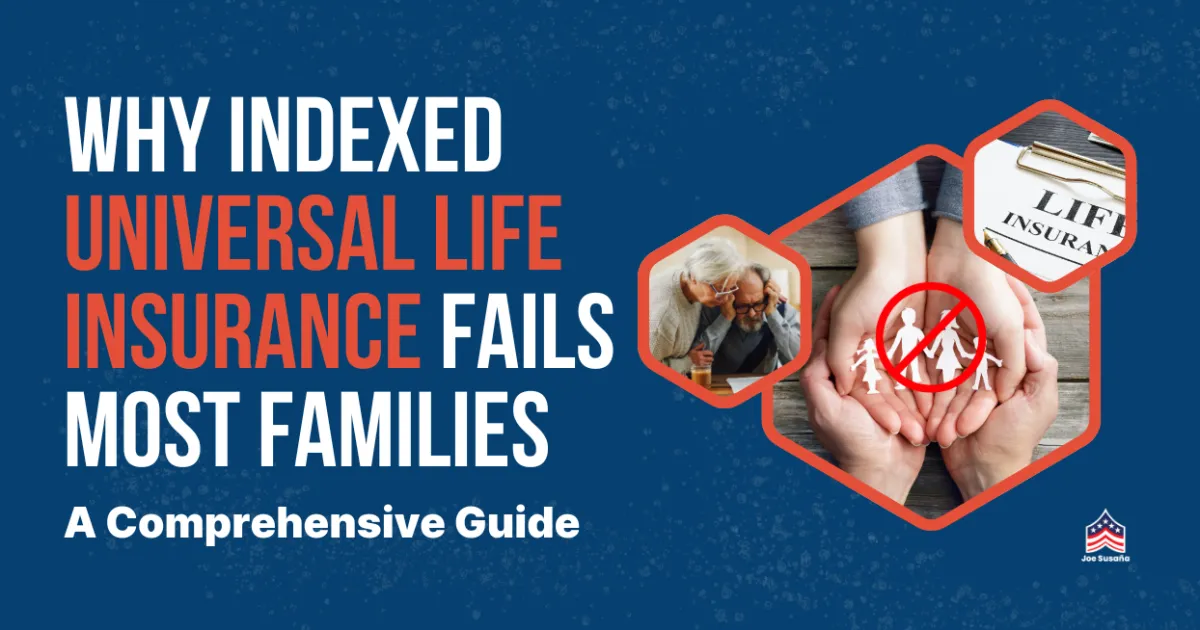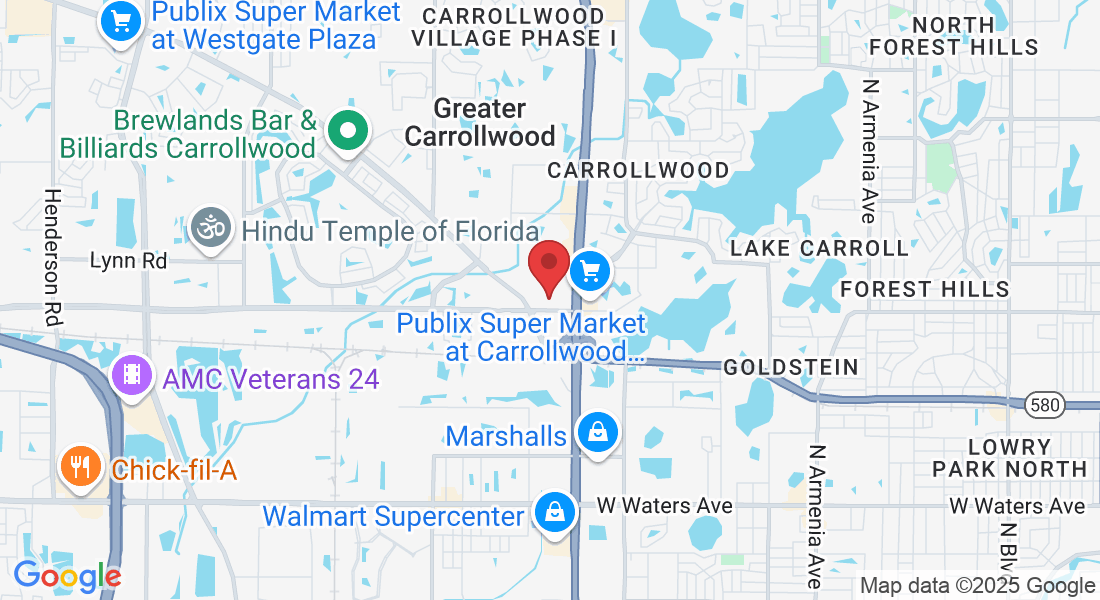CALL NOW & SCHEDULE TODAY
Our Blog
Here you will find free financial tips and actionable items that can help you make better financial decisions, and get you on the path to financial independence. Here's to your success!

Why Indexed Universal Life Insurance Fails Most Families: A Comprehensive Guide
Indexed Universal Life Insurance (IUL): A Costly Mistake for Most Families
Navigating the world of life insurance can feel like trying to solve a Rubik’s Cube in the dark. With so many options, it’s easy to be lured by products that promise both protection and investment opportunities. One such product is Indexed Universal Life Insurance (IUL). While it’s marketed as a hybrid solution for both life insurance and wealth-building, the reality is far less appealing for most families. Let’s dive in and uncover why IUL often falls short and what alternatives make more financial sense.
What Is Indexed Universal Life Insurance (IUL)?
IUL is a type of life insurance that combines death benefit protection with a cash value component. This cash value grows based on the performance of a market index, such as the S&P 500. Sounds great, right? After all, you’re protected if the market falls, and your growth is capped when the market soars. But here’s the catch: this safety net and growth cap come at a high cost.
How Does IUL Work?
Imagine your premium payment as a pie. Part of that pie covers the cost of life insurance, and the rest is allocated to a cash value account. Here are the critical details to know:
Your Money Never Enters the Market:
Instead of being directly invested, your insurer pays you interest based on the index’s performance. This means you’re not earning dividends, missing out on significant opportunities for compounding growth.
Growth Caps and Participation Rates:
IUL policies limit your upside potential. For example, even if the index grows by 15%, your account may only credit you 7.75%, with the insurer pocketing the difference.
High Fees:
IUL policies are riddled with fees, including administrative fees, cost of insurance, and rider charges. These fees can drastically reduce your cash value growth.
Rising Costs:
The cost of insurance increases every year. As you age, these costs eat into your cash value, often leading to policy lapses in later years.
No Guaranteed Returns:
While you are shielded from market losses, the combination of fees, caps, and the lack of dividends often results in returns that fall short of alternative investment options like mutual funds.
Borrowing Comes with Strings Attached:
If you borrow from your cash value, you’ll pay interest of 6%-8%. Additionally, if you die with an outstanding loan, the death benefit is reduced by the loan balance and interest owed.
You Only Get One Benefit:
If you pass away, your family receives the death benefit, but the insurer keeps the cash value. If you withdraw the cash value, the policy can lapse, leaving you without coverage.
Initial Cash Value is $0:
In most IUL policies, the cash value remains $0 for the first few years due to fees and high commissions paid to agents.
A Real-World Example: Sharon and James (Names Changed for Privacy)
Sharon and James purchased a Universal Life (UL) policy 20 years ago, thinking it would secure their future. They paid premiums diligently, believing they were building a solid safety net. But as James approached his 68th birthday, they received shocking news: their premium was no longer sufficient to cover the policy’s rising costs.
The insurer informed them that the cost of insurance had increased so much that their entire premium went to cover it, leaving no money to grow the cash value. They were told to either increase their premium significantly or reduce their death benefit. At this point, their $8,500 cash value had dwindled to $6,000, and the policy was projected to lapse in just a few years unless drastic changes were made.
Had Sharon and James opted for a simple term life insurance policy and invested the difference, they could have avoided these pitfalls and potentially built a much larger financial cushion.
Comparing IUL to Term Life Insurance + Investments
For the cost of an IUL premium, you could buy a term life insurance policy for much higher coverage and invest the remaining money in a Roth IRA or brokerage account. Here’s why this approach works better:
Lower Costs:
Term insurance premiums are significantly lower, allowing you to allocate more toward investments.
Higher Returns:
Investing independently gives you access to vehicles like mutual funds, which historically provide average annual returns of 8%-10% over the long term.
Flexibility:
You control your investments. There are no caps, no participation limits, and no insurer pocketing your gains.
Simplicity:
Term insurance is straightforward: pay the premium, and your beneficiaries receive the death benefit if you pass away.
Immediate Growth:
Unlike IUL policies, your investment account starts growing immediately. Additionally, you can withdraw money from your savings without paying interest.
Dual Benefits:
If you die, your family gets both the term policy’s death benefit and the accumulated savings in your investment account.

The Harsh Realities of IUL
Even though IUL policies are marketed as a win-win solution, they often leave policyholders feeling trapped:
No Access Without Penalty:
Borrowing against your cash value incurs interest, effectively making you pay to access your own money.
Policy Lapses:
If your cash value is depleted and you can’t afford rising premiums, the policy lapses, leaving you with nothing.
Misaligned Interests:
Agents are incentivized by high commissions to sell IULs, which often leads to overselling the benefits and downplaying the drawbacks.
Key Takeaways
Avoid IUL for Most Situations:
Unless you have unique estate planning needs, IUL’s drawbacks often outweigh its benefits.
Buy Term and Invest the Difference:
This strategy allows for more control, higher returns, and fewer fees.
Work with a Trusted Advisor:
Seek guidance from financial professionals who prioritize your best interests, not their commissions.
Conclusion
Indexed Universal Life Insurance might sound appealing, but for most families, it’s a costly mistake. The combination of high fees, capped growth, and rising costs often leads to financial disappointment. Instead, consider the simplicity and affordability of term life insurance paired with a disciplined investment strategy.
If you’re exploring your options or want a second opinion, schedule a free consultation with me. Together, we’ll build a plan that works for your family without the hidden pitfalls of IUL.
Frequently Asked Questions (FAQs)
Q1: Why do agents push IUL so hard? A1: IUL policies generate high commissions for agents, which often incentivizes them to prioritize sales over the customer’s best interest.
Q2: Are there any scenarios where IUL makes sense? A2: IUL is never a better product in any scenario. If you're getting an IUL for the coverage reasons, you can get a lot more coverage for less using a level-term policy. If you're getting an IUL for investment reasons, you money will always grow better in actual investment products. If you're getting an IUL for coverage and savings, you will do better getting Term Life Insurance + Investments.
Q3: What should I look for in a life insurance policy? A3: Prioritize term life insurance for its affordability and simplicity. Ensure the death benefit is sufficient to meet your family’s needs (typically 10x your annual income).
Q4: How can I build wealth without IUL? A4: Use term life insurance for protection and invest in low-cost index funds, Roth IRAs, or mutual funds for long-term growth.
Q5: What if I already have an IUL policy? A5: Review your policy with a trusted financial advisor. Depending on your circumstances, you may want to explore alternatives or adjust the policy to minimize costs. If would love to offer a free review. Just schedule a free consultation with me and let me know you want your IUL policy reviewed.
The best financial plan is one that fits your family’s needs without unnecessary complexity or hidden costs. Let’s create a plan that works for you.
Our mission at J&M Financial Services is simple: to empower families to achieve financial peace of mind. We achieve this by upholding values like integrity, trust, and an unwavering dedication to your financial success.
10008 N Dale Mabry Hwy
Ste 100-S
Tampa, FL 33618
888-681-7506
Copyright © 2025 J&M Financial Services - All Rights Reserved


